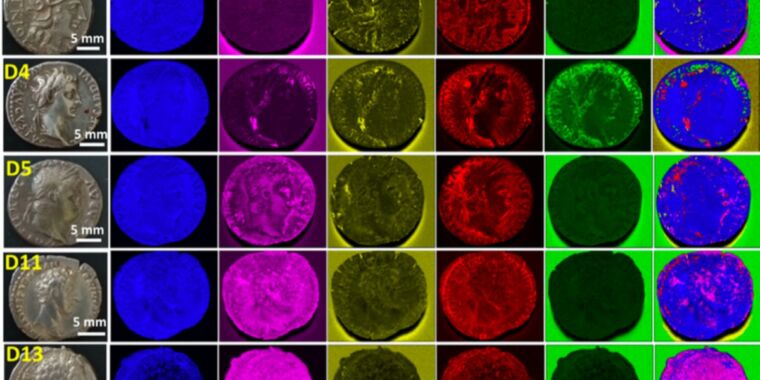Fort Fun Indiana
Diamond Member
- Mar 10, 2017
- 110,245
- 99,375
- 3,645
A physicist studied Ben Franklin’s clever tricks to foil currency counterfeiters
Also: the Roman Emperor Nero was quite fiscally responsible about his coinage.

A physicist studied Ben Franklin’s clever tricks to foil currency counterfeiters
Also: the Roman Emperor Nero was quite fiscally responsible about his coinage.
15 min read, and totally fascinating. On Roman currency:
"
Wiescher turned his attention to Roman denarii in 2019. The Roman silver denarius was the backbone currency of the Roman Empire between 200 BCE and 300 CE, according to Wiescher. During Nero's reign, the coins were required to be 92.5 percent silver, in order to protect the currency against inflation and devaluation. Despite the emperor's reputation for tyranny and debauchery, "Nero was one of the most fiscally responsible of his progenitors and successors, sticking to the laws in the way of having the coins minted," said Wiescher.
But the analysis of coins from 250 to 350 CE showed declining percentages of silver. According to Wiescher, the Roman mints gradually debased the denarius, deliberately, to increase their profits and make it easier to finance ongoing wars in the empire. The mints relied on certain metallurgical techniques to hide the lower percentages of silver to keep inflation at bay. By 295 CE, the silver content was just about 5 percent."
.....
On the US Colonialists' first attempts at paper currency:
"Naturally, counterfeiters didn't take long to introduce fake currency. In fact, "British authorities introduced forgeries of the newly printed Continental currency on a large scale to instigate inflation and a collapse of the early American economic system," Wiescher said. "Franklin and his network constantly generated new ways to distinguish fake bills." Some forms of those techniques are still used to detect forgeries today."
